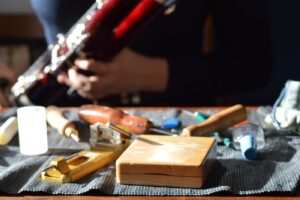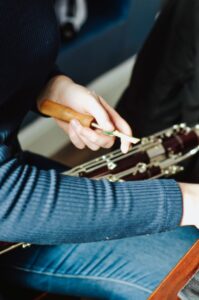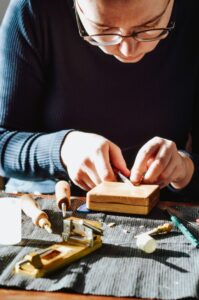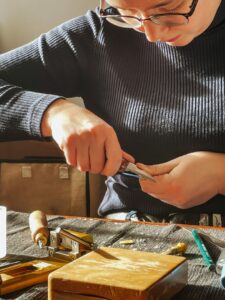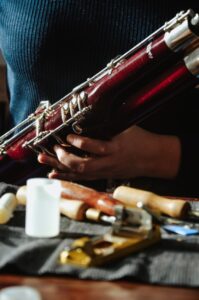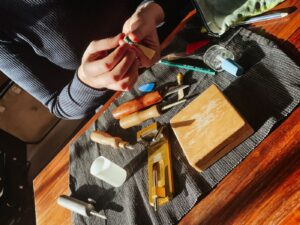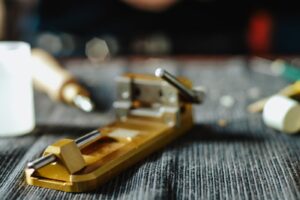Bassoons need a double reed to make sound. Professional bassoonists often make their own reeds; it’s fine-tuned woodwork, a tactile process of crafting your sound.
The best reed-making desk is below a window, in sunlight. Ideally you can see so clearly that the dust motes hanging in the air shine with reflected light. Using light at different angles tells me a lot; the quality of the cane, particulars of each reed’s form, many details.
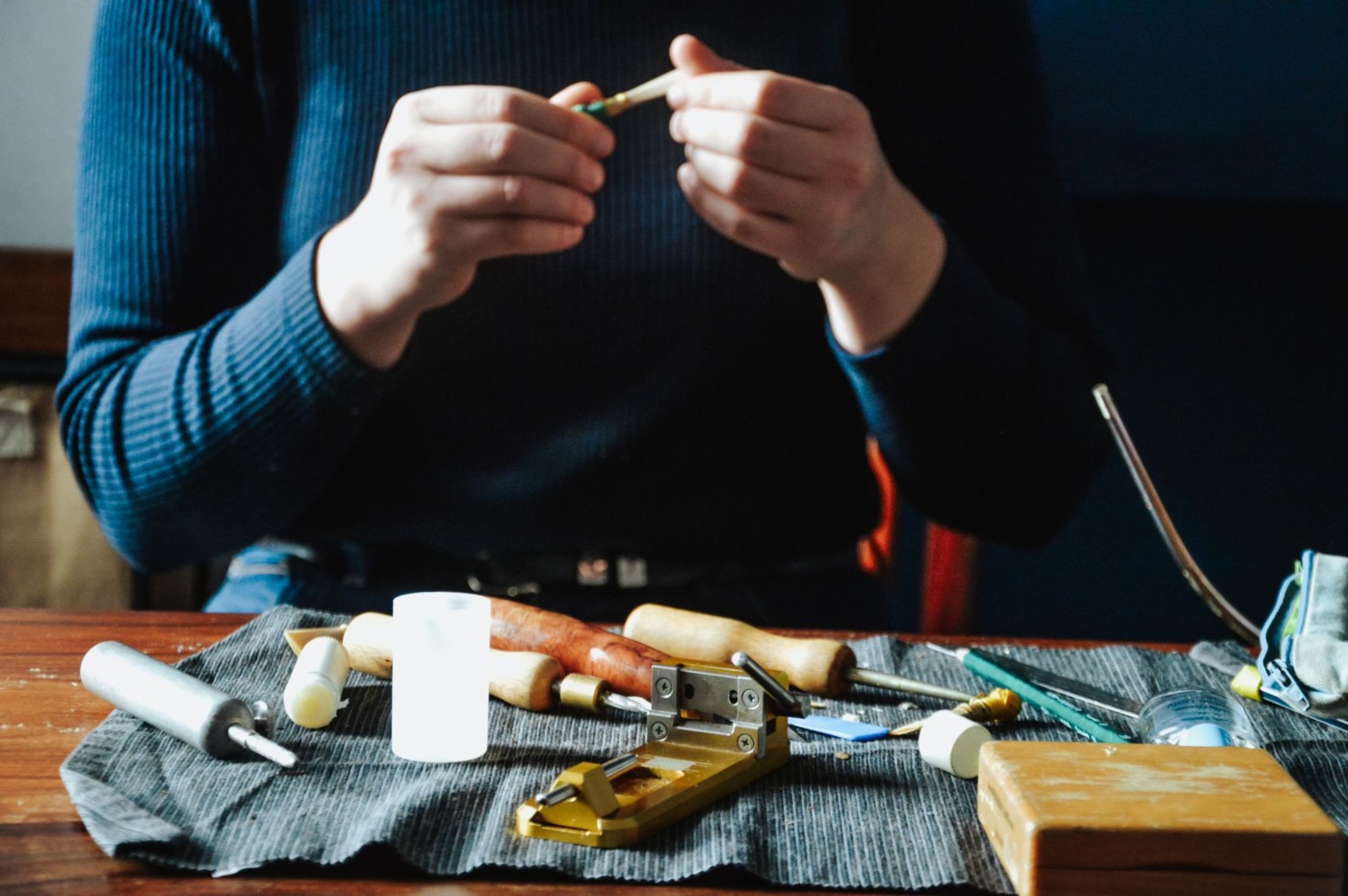
Beautiful light often results in beautiful imagery – photographers’ chasing of golden hour is a familiar product of this. I’ve always been visually fascinated with the process of reed making because it is always done in such clear light. It’s something I do in the mornings when the light seems both soft and direct.
Watching my teacher in my undergrad, and observing so precisely every way he used his hands was a lesson in really seeing. The process of creating reeds, and using my hands in such specific ways to make different shapes still fascinates me.
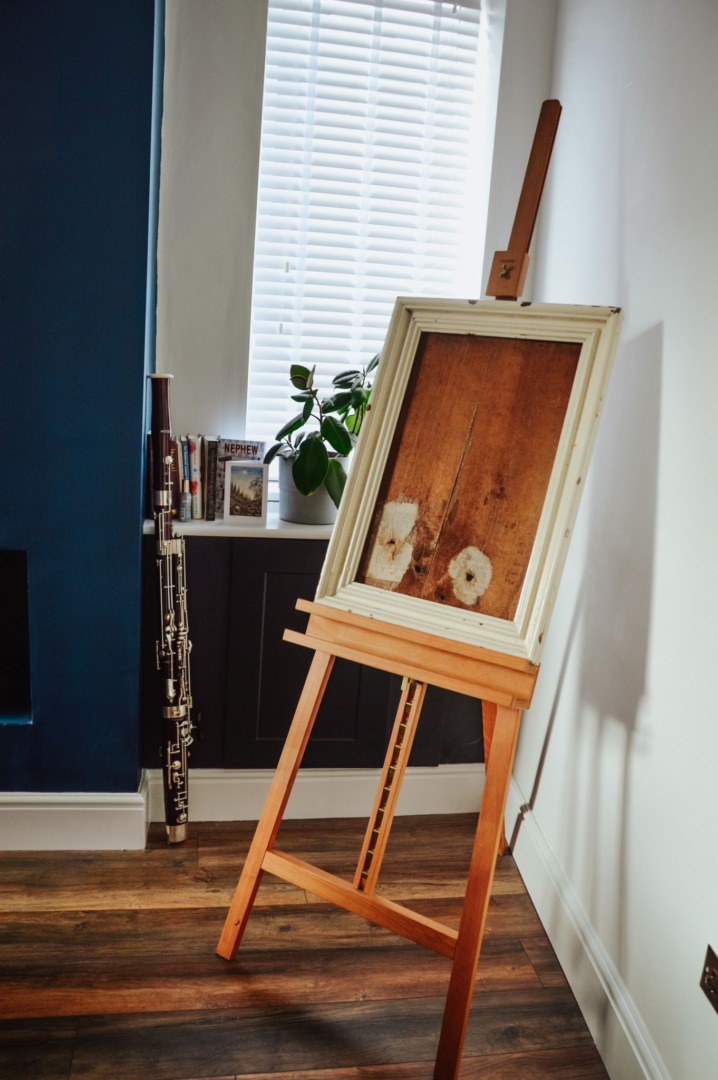
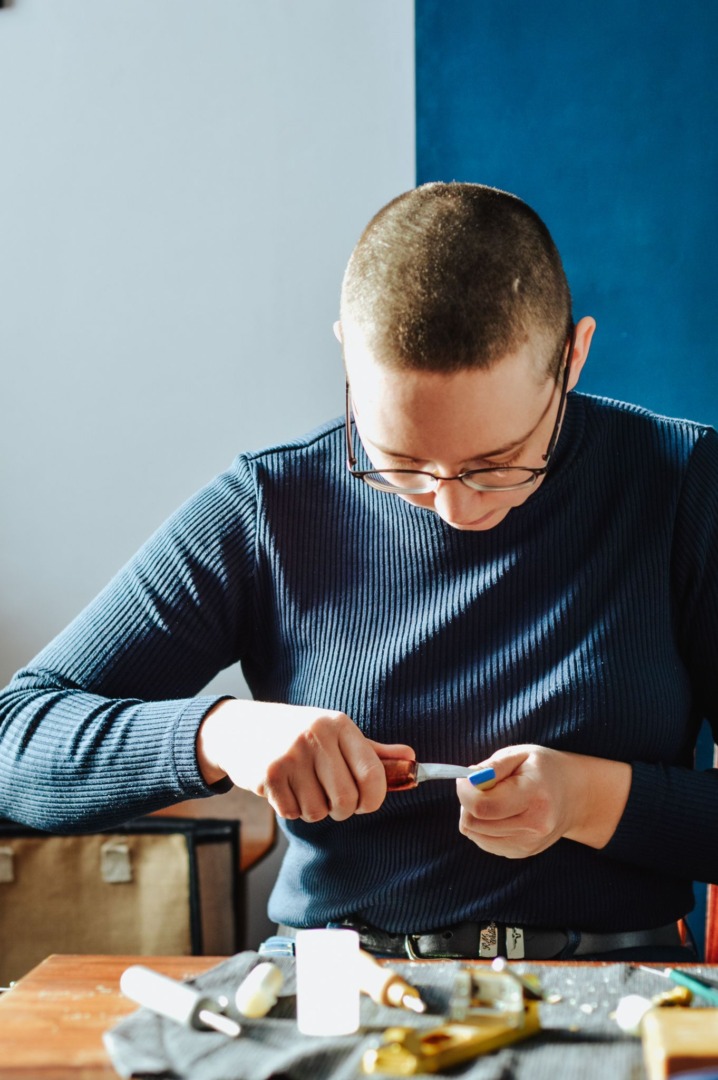
In November 2021, I spent a weekend with my friend Katie Kaestner-Frenchman (they/she) riding bikes. But I also needed to do some work, so in the early morning I would scrape reeds. Katie also noticed how intimately beautiful reed making looks. They brought out their camera and these images are a result of their observation.
My fascination with the beauty of processes is not limited to reed making. I think any kind of creation using your hands is fascinating to observe… this photo set inspires me to continue to explore parallels between the creation of objects in and beyond music.
All photographs by Katie Kaestner-Frenchman.
